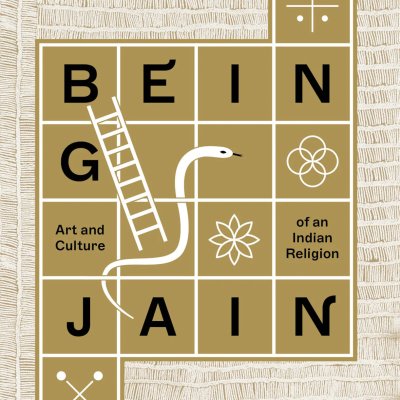Being Jain: Art and Culture of an Indian Religion
Back To Blogs


Being Jain: Art and Culture of an Indian Religion
A Review of Museum Rietberg's Jain Exhibition Volume
03/18/2025
From 2021 to 2023, I had the great pleasure of serving on the advisory board for Museum Rietberg's exhibition, "Being Jain" (German: Jain Sein) under the direction of the museum's Deputy Director Johannes Beltz. While serving on the advisory board, I was involved in a number of exciting initiatives: We hosted Jains from around the world in our collaborative online interview project where interviewees shared how they incorporated Jain principles into their daily lives; my undergraduate students produced reviews of some of the objects in the exhibition; I helped facilitate a guided "tandem tour" where we showed the exhibition to the public in conversation with members of the Jain community; and I gave a guest lecture regarding the Jain tradition to Johannes Beltz's undergraduate course at the University of Zürich. After all of this involvement, I was pleased to read the museum's souvenir volume, Being Jain, which not only captures many of these memories for me personally, but also more importantly provides a way for the public to engage and interact with important aspects of the exhibition itself if they were unable to attend in-person.
This book length volume indeed features objects from the museum's exhibition alongside a robust introduction to the history, culture, and philosophy of the Jain tradition. The many images include not only the many exquisite objects featured in the exhibition itself, but also stunning visual imagery from the documentary films about Jain culture and sacred sites in India produced in conjunction with the exhibition. Our collaborative interview project was also a highlight of the volume, where images of the Jains we had interviewed from around the world appeared alongside a condensed summary of each of their interviews highlighting how they live their Jain tradition in everyday life.
Much to my delight, the volume also includes a fold-out gameboard for the snakes and ladders game, “And You? The Game of Questions”. This game originally appeared in life size version and was featured at the center of the exhibition in Zürich to show participants how karma might play out according to Jain karma theory. The game asks participants to answer playful (and often thought-provoking) questions about how they live their daily lives in light of the values of the Jain tradition. It is not in any way intended to proselytize or convert participants to the tradition but is instead a fun pedagogical tool for showing participants some of the questions Jains might ask themselves as they navigate everyday life in light of their high principles of nonviolence (ahimsa), nonpossession (aparigraha), and so forth. For those who were unable to attend the exhibition itself, this game is now available online and accessible with the QR code provided inside the Being Jain volume.
After reading Being Jain myself, I immediately added it to my "Jain Philosophy" graduate seminar to give students an opportunity to observe how the Jain philosophical ideas we were exploring in ancient Jain texts could be observed in the objects of the exhibition, the films, as well as in the interviews we had conducted. This proved to be a very useful pedagogical tool, demonstrating to students the tension between Jainism's lived and scriptural traditions. After reading through the volume in the course, I invited Johannes Beltz to visit my graduate seminar to discuss the exhibition and to field questions and answers from the students regarding the manifold challenges and opportunities involved in curating an exhibition on the Jain tradition in Zürich.
Much like the organization of the physical exhibition itself, the volume Being Jain is divided into 6 parts: “Jainism,” “Knowledge,” “Renunciation,” “Community,” “Society,” and “Cosmos.” Across these 6 sections we learn about Jain history and core doctrinal beliefs, as well as how those beliefs are lived in everyday Jain life both within the ascetic community as well as by the lay community. We also see how Jains adapt to the broader societies within which they live in the past and present. In total, readers are exposed to an ancient community of religious practice and are invited to observe how the Jain community remains ever vibrant and active all the way into the present, both through its art and objects of devotion as well as in its living practices.
I highly recommend this book to members of the Jain and non-Jain public who are interested in exploring the artistic heritage of the Jain tradition. Having already used it myself in the classroom, I also highly recommend Being Jain to professors of both undergraduate and graduate courses as an introductory volume to the tradition's history, culture, and art.
I hope all will enjoy reading Being Jain as much as I and my students have. Jai Jinendra!
If you are interested in learning more about South Asian religions and dharma traditions, consider applying to the online Engaged Jain Studies graduate program MA track offered in collaboration with Claremont School of Theology.
Christopher Jain Miller, is the co-founder, Vice President of Academic Affairs, and Professor of Jain and Yoga Studies at Arihanta Institute. He completed his PhD in the study of Religion at the University of California, Davis and is also a Visiting Researcher at the University of Zürich's Asien-Orient-Institut and Visiting Professor at Claremont School of Theology where he co-developed and co-runs a remotely available Masters Degree Program focusing on MA-Engaged Jain Studies graduate program.
